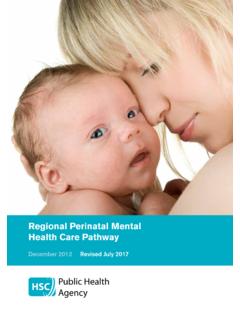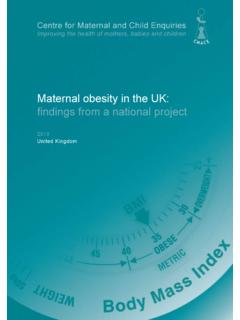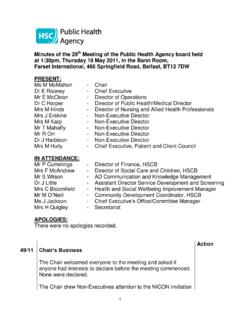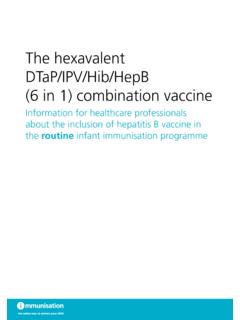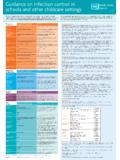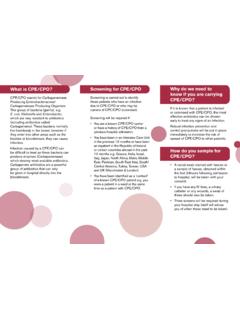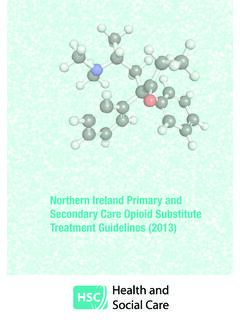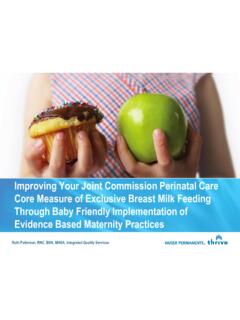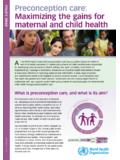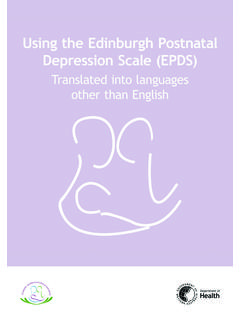Transcription of Care Pathway Definition - Public Health Agency
1 Regional perinatal mental Health care Pathway December 2012 Revised July 2017 Index of contents Section Title Page Foreword 2 care Pathway Definition 3 care Pathway Scope 4 Stepped care Approach 4 care Pathway Interconnections and Interdependencies 8 Role of the General Practitioner 8 Role of the Midwife 10 Role of Family Nurse Partnership Nurse 12 Role of the Obstetrician 13 Role of the Health Visitor 14 Role of the Secondary care mental Health Services 16 Role of Occupational Therapist 17 12 .0 Safeguarding Children 17 13 .0 Medication Issues 19 14 .0 Improving Outcomes for Users and Carers 21 15 .0 How to use this care Pathway 22 16.
2 0 Antenatal Screening Flowchart 24 17 .0 Explanatory Notes Antenatal Screening Flow Chart 26 18 .0 Pregnancy and Early Postnatal care Plan 28 Explanatory Notes Pregnancy and Early Postnatal care Plan 31 20 .0 Postnatal Flowchart 32 21 .0 Explanatory Notes for Postnatal Flow Chart 33 References 34 Acronyms and Abbreviations 35 APPENDICES -1. Pathway review group-2. Whooley/Anxiety Questions-3. Template Letters-4. Edinburgh Postnatal Depression Scale36 37 38 43 1 FOREWORD The Regional perinatal mental Health care Pathway (PNMHP) was initially launched in Northern Ireland (NI) in 2012 to facilitate the prediction, detection and treatment of the perinatal mental Health of women in the antenatal and postnatal period.
3 A review of this Pathway was required following the release of NICE Clinical Guideline 192, antenatal and postnatal mental Health (Dec 2014) and the Regional mental Health care Pathway . Within the Regional mental Health Pathway is a Stepped care model which specifies the anticipated steps of care from primary care through to secondary care and the revised PNMHP has included this model to inform practice (Pages 4-8). The five themes of the 2012 perinatal mental Health care Pathway remain: 1. Co-ordination of service delivery 2. The competencies of the multidisciplinary team 3. Promotion, prediction and detection 4. Effective communication 5.
4 Appropriate use of medication To facilitate improved communication between all primary and secondary care services the original template letters have been revised and reduced to four (Appendix 3). This updated Pathway will provide guidance to all Health and social care professionals who come into contact with women1 in the antenatal and postnatal period across all settings inclusive of primary care . In the interests of effective information sharing and communication, it is important that all referrals and communication between HSC professionals are timely to ensure a coordinated and consistent approach to the care of individual women and their children.
5 All Professionals should follow their local HSCT operational guidance and their local PNMHP. Note: The perinatal Period is the name given to the period immediately before and after birth. It is defined in diverse ways and depending on the Definition ; it starts at the 20th to 28th week of gestation and ends 1 to 4 weeks after birth. In the context of this document perinatal , however, is taken to describe psychiatric disorders that arise in association with pregnancy and the postnatal period generally up to 12 months following birth. 1 The term woman will be used in this document and is intended to be inclusive of young women under the age of 18 years.
6 2 care Pathway Definition The development of the care Pathway in 2012, was led by the Public Health Agency (PHA), supported by a wide-ranging stakeholder multidisciplinary working group for perinatal mental Health and has subsequently been reviewed to reflect new national guidance (Appendix 1). AIM To support the provision of an effective multidisciplinary/ Agency service for the prediction, detection and treatment of maternal mental ill Health through the antenatal and postnatal periods for all women in Northern Ireland (NI). perinatal mental Health issues which may complicate pregnancy and the postpartum year are common with 10-20% of women developing mental ill Health during this time.
7 It is a major Public Health issue and if untreated may have a devastating impact not only on the women but on the family as a unit. The symptoms may range from mild to moderate low mood/anxiety lasting at least two weeks though to a more serious illness requiring specialist support services. The majority of women detected will experience symptoms of mild to moderate ante/postnatal depression/anxiety and can be helped by increased support from family, the midwife, family nurse and GP and Health visitor. perinatal mental Health illnesses also include obsessive compulsive disorder, post-traumatic stress disorder (PTSD) and postpartum psychosis which effects 1:1000 women.
8 Eating disorders and substance misuse in pregnancy and the postnatal period are included and are collectively called perinatal mental Health issues. Depending on the severity of the disorder, the mother may struggle to look after herself and her baby and may also impact on her ability to bond with her baby and be sensitive to the baby s emotions and needs. This may have an effect on the baby s ability to develop a secure attachment resulting in a significant and damaging impact on the emotional, cognitive and even physical development of the child. Women with pre-existing mental Health illness may have a relapse or recurrence of their illness following childbirth and women who previously have been symptom free, may have an elevated risk of suffering from a mood disorder, particularly the more serious mood disorders in the postnatal period.
9 Puerperal psychosis in the United Kingdom (UK) has an overall incidence of 2:1,000 births. 3 The antenatal period offers Health care professionals a unique opportunity to screen for risk factors associated with maternal mental ill - Health and thereby ensuring appropriate early interventions are provided, including referral to the best available services. Identifying and treating mental ill Health is not only beneficial for the woman but also for the future Health and wellbeing of her child and the family unit as a whole. care Pathway Scope The PNMHP takes account of the Stepped care Framework referenced within The Regional mental Health care Pathway (2014) and commences with the identification of a previous history, signs and symptoms or a positive response to the Whooley and anxiety questions.
10 It also takes account of the recommendations from the DHSSPS Maternity Strategy for Northern Ireland (2011), Antenatal and Postnatal mental Health , NICE Guidance (2014), Making Life Better 2013- 2023 (PHA 2014) and the recommendations set out in Transforming Your care , DHSSPS (2011). It is intended that the revised PNMHP will facilitate a consistent regional approach for all pregnant and postnatal women in NI and local service arrangements are available in each of the Stepped care Approach A stepped care approach should be adopted when managing women with mental ill Health during pregnancy and the postnatal period. The majority of these women are managed within primary care , including those with mild to moderate depression, anxiety, adjustment disorders and other conditions.
